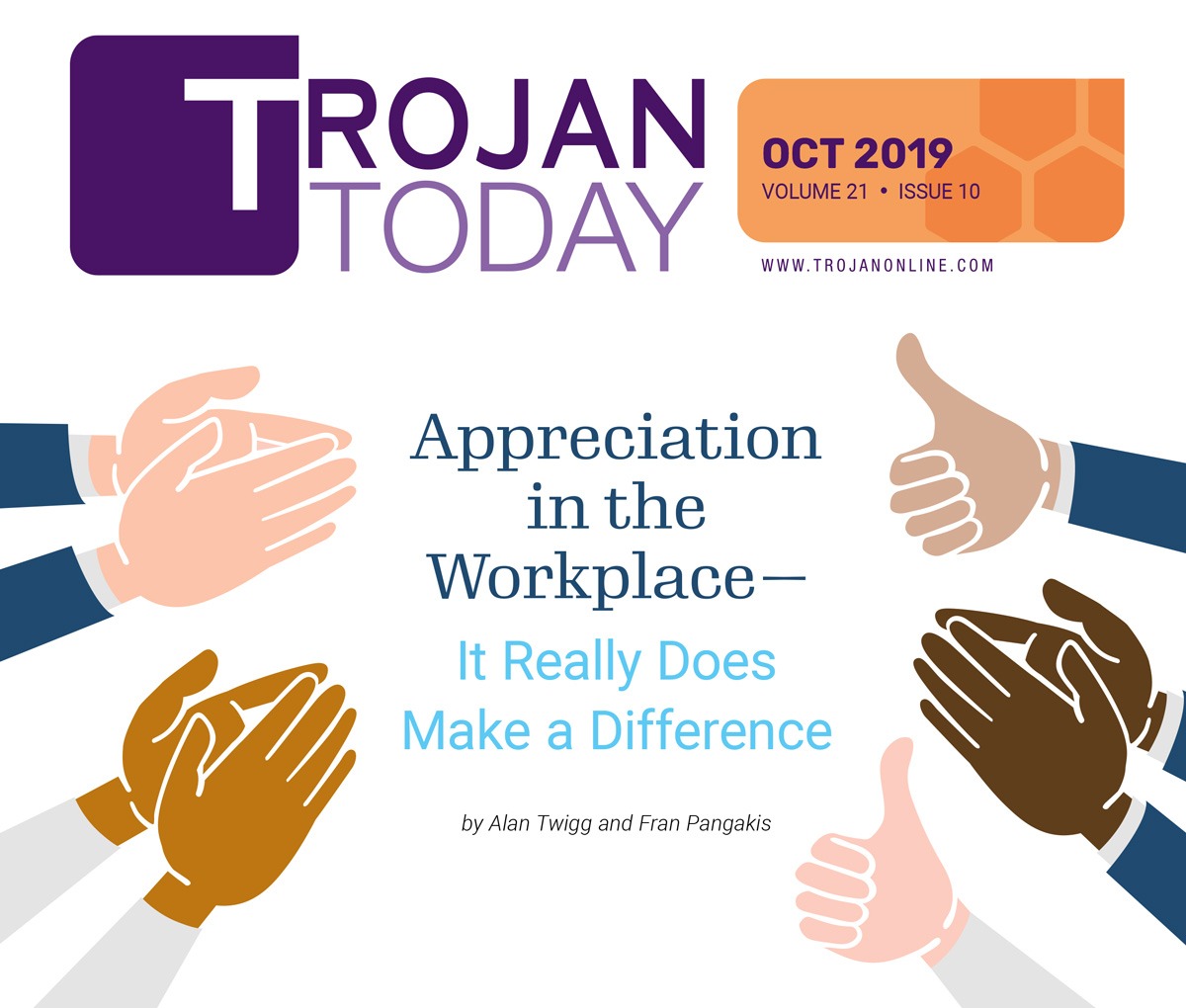Many employers and employees think they already do a great job of showing and communicating appreciation. Yet, here are some current and striking statistics*:
- Only 29% of employees are engaged with their work
- 54% of employees are not engaged with their work
- 17% of employees are actively disengaged, meaning they’re regularly sabotaging productive work
- 79% of employees who quit their jobs cite lack of appreciation as one of the main reasons for leaving
Bottom line:
You may not be doing as good a job as you think.
When it comes to management styles, people have a tendency to mimic the style they learned from previous jobs or employers. After all, we tend to do what is familiar to us. And if that style didn’t proactively embrace appreciation in the workplace, odds are you won’t naturally do it either. Luckily, you’re not stuck with that model; you can learn a different style. There are libraries full of books on management styles, and there is data on the most effective among them.
For this article, we will focus on one component: motivating
by appreciation, i.e., using more carrot and less stick. Ways of expressing
appreciation can vary widely. We’ve all heard about Google’s free food and
flexible work time benefits. Appreciation is at once both simpler and more
complex than gimmicks like ping pong games on Fridays.
Here
are 10 easy ways to express appreciation to almost anyone:
1. Give a verbal compliment
2. Write an email
3. Stop by and see how someone is doing
4. Do something together
5. Do a small task for someone
6. Offer help
7. Buy coffee/tea/snack
8. Give a magazine related to an area of interest
9. High five when a task is completed
10. Greet each other warmly
Study after study has shown that every employee wants to know what is expected,
how they’re doing, what they could/should do better, and that they are making a
difference. Everyone needs appreciation in order to do their best work. The
more the appreciation aligns with the individual, the greater the impact.
Developing a habit of spending a few dedicated minutes on appreciation with employees and co-workers on an ongoing basis takes very little time. Investing in workplace appreciation can yield significant results.
Thankfully, some smart people have studied this concept and found that people’s appreciation needs are not entirely the same. Among those smart people are Dr. Gary Chapman and Dr. Paul White. They have studied and authored The 5 Languages of Appreciation in the Workplace.
Dr. Chapman is also the author of The 5 Love Languages, which, along with The 5 Languages of Appreciation in the Workplace, is a New York Times bestseller. Both books are quick, excellent reads, and are highly recommended for both personal and professional growth.
One concept behind The 5 Languages of Appreciation in the Workplace is that we all have a primary and secondary language in which we like to receive appreciation. Those languages are Quality Time, Words of Affirmation, Gifts, Acts of Service, and Touch. Obviously, touch in the workplace can raise red flags, but an occasional high five or fist bump may, at times, be acceptable for certain people.
The Languages
Quality Time
As it sounds, this is quality time and focused attention given to your employees, usually one-on-one. The important thing is quality, not quantity. Block out 5-10 minutes, put your cellphone away, tell other staff members not to disturb you, and get ready to listen. A focus on work is important; avoid talking about trivial personal events.
You may need to ask probing questions:
- How are things going?
- How’s your workload?
- What do you think of the schedule?
- What’s working and not working?
Getting quality answers may take time. If this is a new experience for the staff, don’t expect them to open up the first time. Trust will build with persistence and genuine connection.
Words of Affirmation
Saying “good job” is a good start, but take it further. Avoid blanket statements to all employees like “great work everyone; keep it up.” Find something, in particular, the person did, even if it’s as simple as the way s/he answered the phone, and compliment that person for that action. While the old adage is “critique in private, praise in public,” keep in mind that some staff will prefer individual praise over group praise.
Other examples of Words of Affirmation:
Write appreciation; email is fine, handwritten is better
- Compliment an employee for an attitude or behavior, such as being optimistic, organized, or self-directed
- Mention at a staff meeting the solid work someone did on a difficult project
Gifts
Keep it unique. Buying everyone the same present won’t get you the “Boss of the Year” award, nor will giving basketball tickets to the person who hates sports. Gifts should be personal and unique to the individual. This language requires listening and learning. There are certain gifts, like food, for example, that everyone enjoys. Take your staff out for lunch, or schedule a company dinner where significant others are invited. Gifts do not have to be expensive; a small, personal gift will go much further than an expensive, impersonal one.
Acts of Service
Everyone can use a helping hand. Take note of your team and their workloads. If someone is on vacation, where is the extra pressure? Can you assist someone with a particular project? What if you stayed late to help the final push of a big task? Could you supply food or complete menial tasks to allow the team to focus on their project?
Keep in mind:
- Ask first, don’t assume the person needs help
- Be cheerful
- Do it their way, follow their lead
- Finish the task, don’t leave them hanging halfway through
Most people are not aware that these subtle language preferences exist, for themselves or others. This can create confusion, tension, and resentment. A manager may give a material gift to an employee only to find the employee marginally excited because his/her primary language is not Gifts. The manager thinks, “I would have been thrilled to receive this and s/he doesn’t seem to care at all, what is wrong with her/him?”
It has been said that it is better to give than to receive. The science now backs that up. By giving to your employees and your co-workers, in their preferred language, you become happier and more fulfilled. You start a positive feedback loop that yields tangible financial results and reduced stress. Give it a try today!
*Source: The 5 Languages of Appreciation in the Workplace, by Dr. Gary Chapman and Dr. Paul White
__________________
Alan Twigg is Vice President at Bent Ericksen & Associates, with expertise in client consultations, strategic planning, marketing plan development, operational support, and product development.
Fran Pangakis, RDH, CPBC, brings more than 30 years of experience in dentistry to her consulting business, with career work as a dental hygienist, assistant, and business manager.
FMI: www.bentericksen.com, info@bentericksen.com, or (800) 679-2760.

